You only get one chance to make a first impression. For your Shopify store, that first impression is crucial. But how do you instantly capture attention, communicate your brand’s unique value, and guide visitors toward your bestsellers?
When done right, pop-ups can be your secret weapon. This guide will show you how to create and add a pop-up on Shopify that delights visitors and drives conversions from the moment they land on your site.
How to Add a Popup to Shopify in 5 Easy Steps
To display pop-ups on your Shopify store, you’ll need a pop-up tool that integrates with your Shopify account. We recommend Picreel as our tool of choice, as it offers easy integration and is arguably the best pop-up app for Shopify.
Let’s take a look at how to do this.
Step 1: Log in to your Shopify eCommerce store
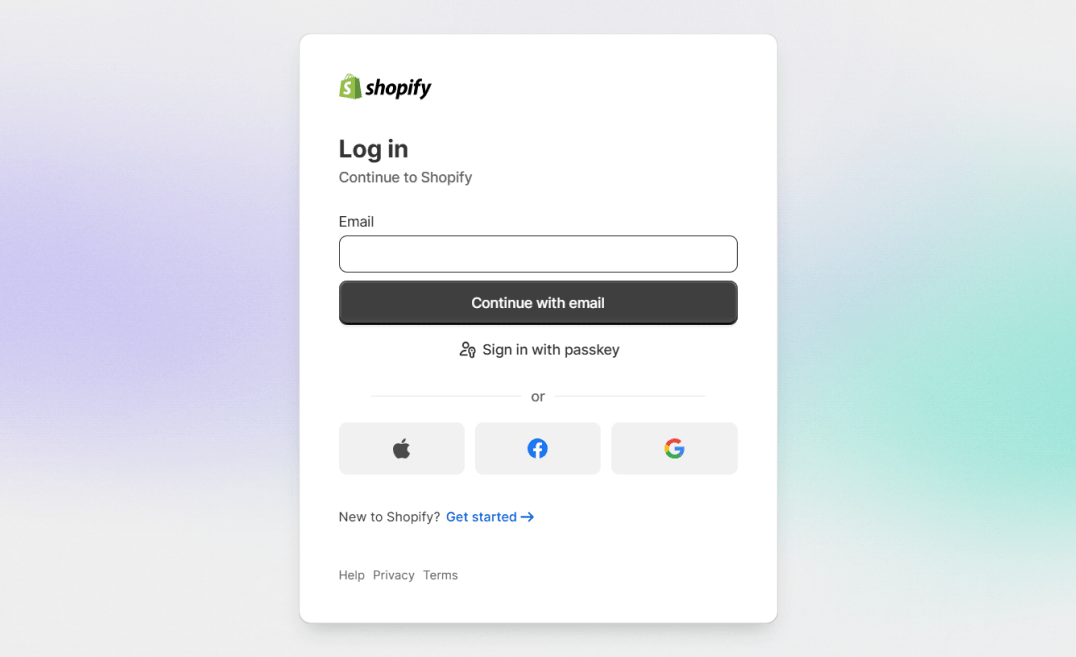
Step 2: Click ” Apps ” on the sidebar to access the Shopify App Store.
The “Apps” option can be found either in the sidebar or at the bottom of the search bar.
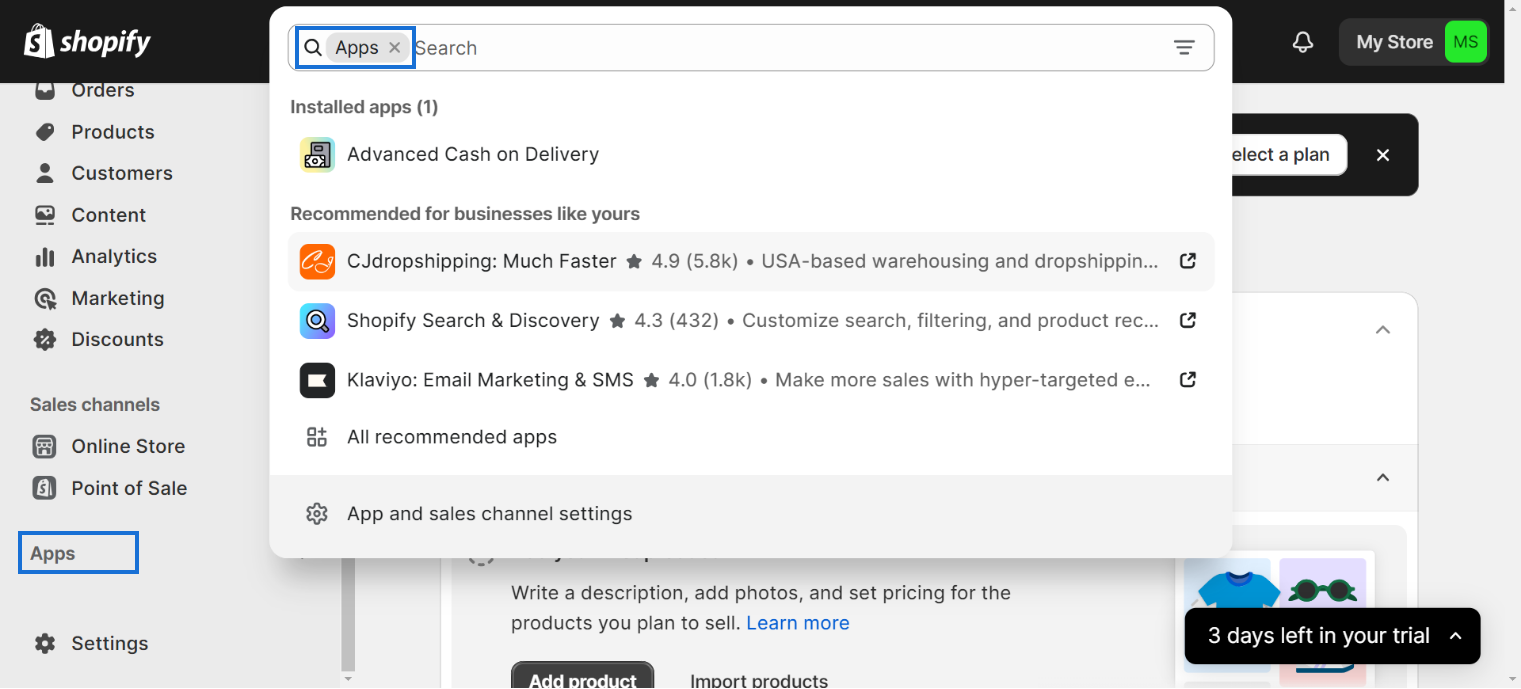
Step 3: Search “Picreel” in the search bar and select “Picreel: Sales & Email Popups” from the search results.
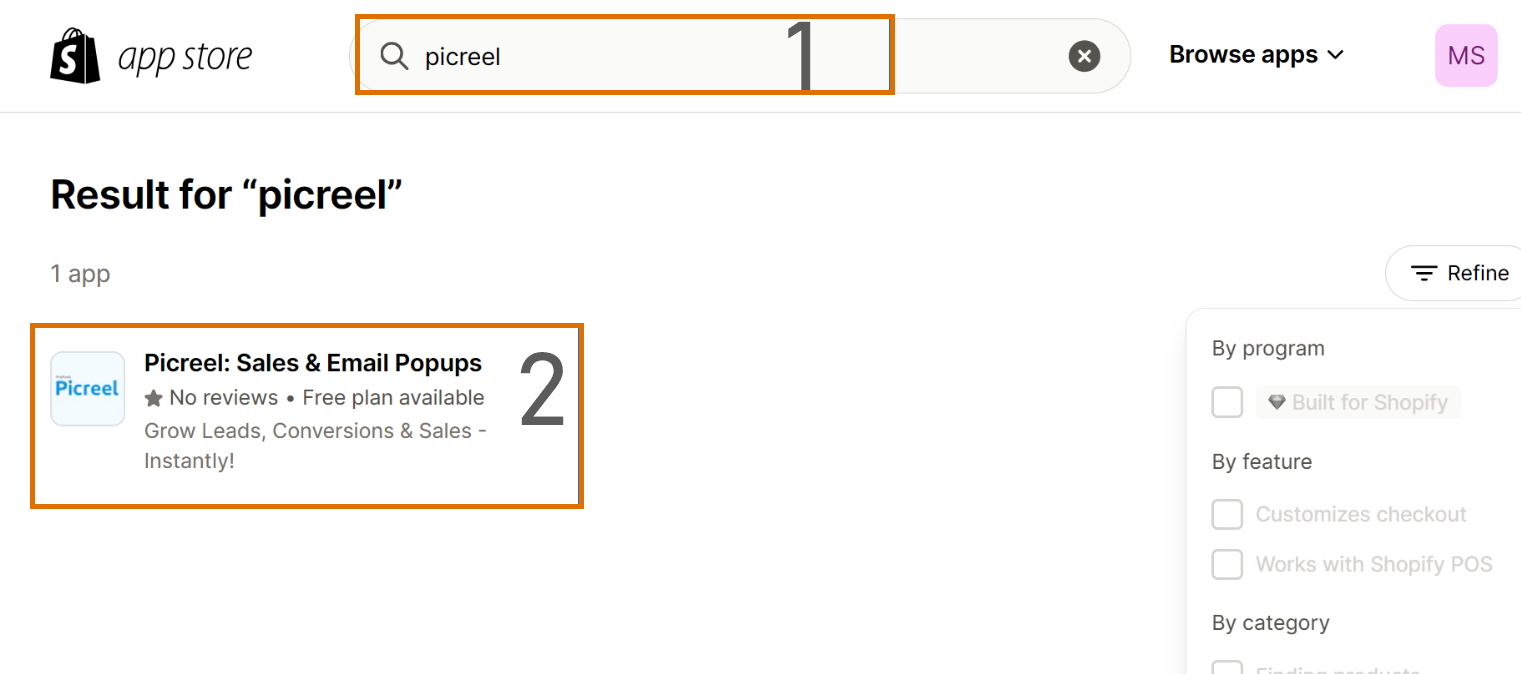
Step 4: Initiate the integration process by clicking “Add App”.
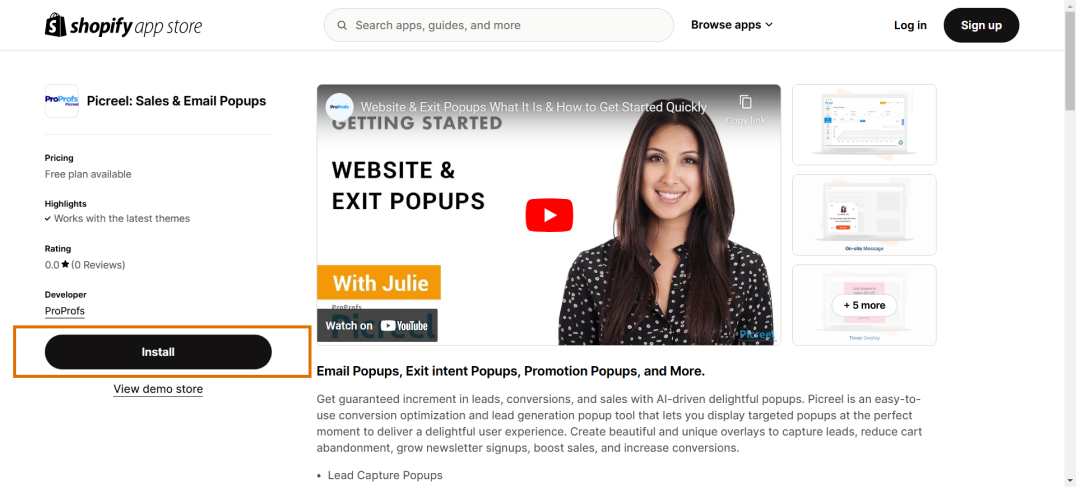
Step 5: After you have added the app, click on “Install App“.
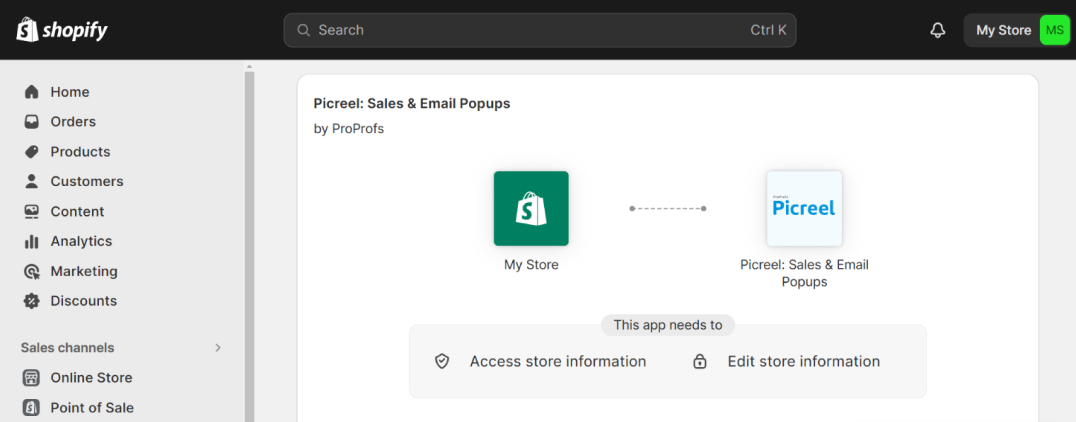
There you are! That’s all about how to create a Shopify popup in just 5 easy steps.
Tips to Make Your Shopify Popups More Effective
Pop-ups can be a powerful tool for engaging visitors and driving conversions on your Shopify store, but only if they’re done right. Here are some tips to make your pop-ups more effective:
- Time it Right: Don’t interrupt immediately. Use exit-intent, timed, or scroll-triggered popups.
- Personalize Offers: Target specific audiences with tailored messages and relevant products.
- Nail the Copy: Clear, concise, and compelling with a strong call to action.
- Design With Style: Visually appealing, on-brand, and mobile-friendly.
- Offer Real Value: Give incentives like discounts, free shipping, or exclusive content.
- Don’t Be Pushy: Make it easy to close the popup and avoid annoying visitors.
- Test and Tweak: A/B test different elements and analyze results to optimize performance.
Effortlessly Create Shopify Popups & Add Them to Your Store
Want to take your Shopify store to the next level? Strategically used pop-ups can boost engagement and drive conversions. They enhance the customer experience, guide visitors towards your best products, and reduce cart abandonment.
With the right pop-up builder and compelling offers, you can create a more interactive shopping experience on your Shopify store. A top recommendation would be Picreel, which offers a range of options, from exit-intent pop-ups to beautiful popup templates, all seamlessly integrated with Shopify.
Give it a try and see the difference!
Frequently Asked Questions
Q. Are there free popup apps available for Shopify?
Yes, Shopify offers a variety of free popup apps to help store owners engage with visitors and boost conversions. One popular option is Picreel, a conversion optimization tool that allows you to create eye-catching popups to capture leads and reduce cart abandonment. Picreel offers customizable templates, exit-intent triggers, detailed analytics to track your results, and more.
Q. What should my Shopify popup offer to attract visitors?
To capture your audience’s attention, your Shopify popup should offer something of value that resonates with their needs. Here are a few popular options:
- Exclusive Discounts: Offer a percentage off or free shipping to new visitors.
- Limited-Time Offers: Create urgency with countdown timers for flash sales.
- Content Upgrades: Provide valuable resources like e-books or guides.
- Giveaways or Contests: Engage visitors with a chance to win a prize.
 Tips
Tips
We’d love to hear your tips & suggestions on this article!
FREE. All Features. FOREVER!
Try our Forever FREE account with all premium features!

 We'd love your feedback!
We'd love your feedback! Thanks for your feedback!
Thanks for your feedback!







